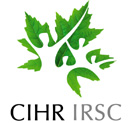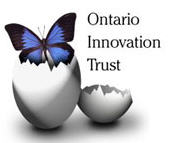Main Research Theme
A large and growing family of medical interventions involves the placement of some linear surgical instruments. Typical examples include needle based aspirations, injections, local ablation therapies, brachytherapy, but "virtual needles" like high energy X-ray and laser beams are also commonly applied. The majority of these interventions today are performed percutaneously (i.e., across the skin). Recently, a rapidly growing variety of these procedures have been deployed via alternative access routes from within body cavities (rectum, sinus, throat), as well as the vascular and gastro-intestinal systems. Typical guidance methods are computed tomography, ultrasound, magnetic resonance imaging, and fluoroscopy. Our lab focuses on development of enabling technology for image-guided percutaneous and intra-cavity procedures. An important aspect of our research is translation of these systems and technologies to clinical trials, through partnership with world-class clinical experts and industry partners in Canada, U.S.A, and beyond.
Multidisplinary Learning
Our research subjects is highly interdisciplinary, spanning across computer science, electrical engineering, mechanical engineering and clinical sciences, primarily radiology, radiation oncology and surgery within. Students and postdocs in the Perk Lab come from these disciplines and thus are typically co-advised by multiple faculty members and collaborators. Our research program leverages an extensive network of clinical and engineering collaborators worldwide. As I often put it to my students: "If you learn only from me, then you will know only as much as I know, and this is not enough for progression."
The Perk Lab is co-located at Queen's University (at Kingston in Canada) and Johns Hopkins University (at Baltimore in the U.S.A). Students, depending on their particular projects and availability of research funding, are located at either side and are mentored by multiple faculty, with full transparency between the two locations of the Perk Lab. A recent Computer-Integrated Surgery Graduate Exchange Program between the computer-integrated surgery programs at Queen's and Johns Hopkins allow my students to move between the two universities. They can take courses and carry course credits, in both ways. This is a unique opportunity for my students at Queen's who can benefit from working with a vast network of partners in world's best hospital and biomedical engineering program at Johns Hopkins.
At Queen's, the Perk Lab is seamlessly fused with the Medical Image Analysis Laboratory, directed by Dr. Purang Abolmaesumi and the MedI Lab directed by Dr. Parvin Mousavi. This conglomerate that we, lieu of a better name, affectionately call the "Trio Labs" share resources, space, equipment, and most importantly gray matter. Most students in the Trio Labs are co-supervised and a cadre of superbly trained professional staff engineers assist research and mentoring.
At the Johns Hopkins University, the facilities of the Perk Lab are located in the Laboratory for Computational Sensing and Robotics (www.lcsr.jhu.edu). The Perk Lab has been a charter member of the NSF-funded Engineering Research Center for Computer-Integrated Surgical Systems and Technologies (www.cisst.org).
Research Support
The Perk Lab has been supported by a diverse portfolio of U.S. and Canadian grants, and industry partners. (A list of current research grants held by Dr. Fichtinger is here. This list may need some update, new grants come and once current grants get completed all the time J.)
Lab Director
Gabor Fichtinger, PhD (gabor@cs.queensu.ca, gabor@cs.jhu.edu)
Associate Professor, Queen's University
Adjunct Associate Professor, Johns Hopkins University
Research and infrastructure has been supported in part by:






